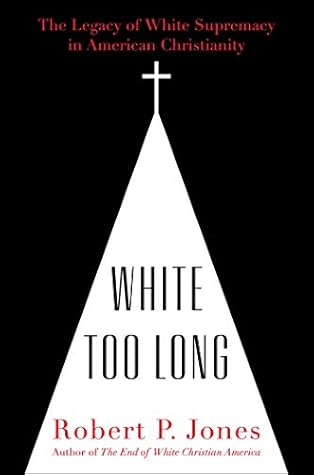More on this book
Community
Kindle Notes & Highlights
Read between
October 19 - October 21, 2020
the Confederate monument movement was primarily a means of marking white territory and resisting black equality
Both Easter and Confederate Memorial Day—which remains an official state holiday in Alabama, Mississippi, and South Carolina—are celebrated in the spring within weeks of each other,
Robert E. Lee, Stonewall Jackson, and Jefferson Davis in particular evolved into Confederate Christian saints who were treated as religious icons.
Davis came to function as a Christian martyr, whose life and treatment immediately after the war symbolized the South’s broader mistreatment and humiliation.
public uses of the Confederate battle flag increased as black demands for justice advanced and white supremacy was threatened.
“The flag has been adopted knowingly and consciously by government officials seeking to assert their commitment to black subordination.”41
Beginning in the late nineteenth century, however, the Confederate battle flag took on more political and ideological meaning, as southern whites clawed their way back to power after Reconstruction and began to systematically disenfranchise African Americans with Jim Crow laws. Most notably, it was flown regularly in the 1920s and 1930s, alongside the American flag, by the second incarnation of the KKK at parades and rallies.42 It could also be seen regularly at University of Mississippi football games beginning in the late 1930s.
the Confederate battle flag was adopted by civic groups such as the White Citizens’ Councils and displayed regularly by groups of whites gathering to protest school desegregation and civil rights for blacks.
In a sermon, Dean Greenwell declared, “The church itself has been complicit in enshrining systems and people who contributed to white supremacy, and they are here in the very corners of this cathedral.”
research demonstrates that the deep racial prejudice that was created by a slaveholding society is still measurably present in the contemporary South,
86 percent of white evangelical Protestants, along with 70 percent of white mainline Protestants and 70 percent of white Catholics, believe that the Confederate flag is more a symbol of southern pride than of racism.
For white evangelical Protestants, there is, strikingly, a stronger boost in likelihood of affiliation due to racist attitudes among frequent church attenders than among infrequent church attenders.
holding racist views is nearly four times as predictive of white evangelical Protestant identity among frequent church attenders as among infrequent church attenders.
today the most dominant “religious” group in the West is the religiously unaffiliated,
The data suggest that white Christian churches, both Protestant and Catholic, have served as institutional spaces for the preservation and transmission of white supremacist attitudes.
most white Christian churches have protected white supremacy by dressing it in theological garb, giving it a home in a respected institution, and calibrating it to local cultural sensibilities.
the strong relationship between racist attitudes and white Christian identity.
being affiliated with each white Christian identity is independently associated with a nearly 10 percent increase in racist attitudes, compared with those who do not identify as a white Christian:
there is no significant relationship between white unaffiliated identity and holding racist attitudes.
there is no evidence that going to church every week, at least at the churches white Christians are currently attending, makes a white Christian any less likely to be racist.
Attending church more frequently does not make white Christians less racist. On the contrary, there is a positive relationship between holding racist attitudes and white Christian identity among both frequent (weekly or more) and infrequent (seldom or never) church attenders.
there is no significant relationship between white religiously unaffiliated identity and holding racist attitudes.
if you were recruiting for a white supremacist cause on a Sunday morning, you’d likely have more success hanging out in the parking lot of an average white Christian church—evangelical Protestant, mainline Protestant, or Catholic—than approaching whites sitting out services at the local coffee shop.
The last known person to have been born into slavery, Sylvester Magee, died in Hattiesburg, Mississippi, in 1971,
“Similar to religion and language, attitudes—including political and racial attitudes—are passed down from generation to generation, fostered and encouraged by families and social structures, such as schools and churches.”
most white Christian churches have reformed very little of their nineteenth-century theology and practice, which was designed, by necessity, to coexist comfortably with slavery and segregation.
Not only in the South but nationwide, higher levels of racism are associated with higher probabilities of identifying as a white Christian;
adding Christianity to the average white person’s identity moves him or her toward more, not less, affinity for white supremacy.
Minnesota is home to the greatest number of Lutherans of any state;
The state is also one of the whitest states in the country.
Mississippi the dishonor of having the highest number of recorded lynchings of any state.
it is white Americans who have murdered our black and brown brothers and sisters. After the genocide and forced removal of Native Americans, the enslavement of millions of Africans, and the lynching of more than 4,400 of their surviving descendants, it is white Americans who have used our faith as a shield to justify our actions, deny our responsibility, and insist on our innocence. We, white Christian Americans, are Cain.


